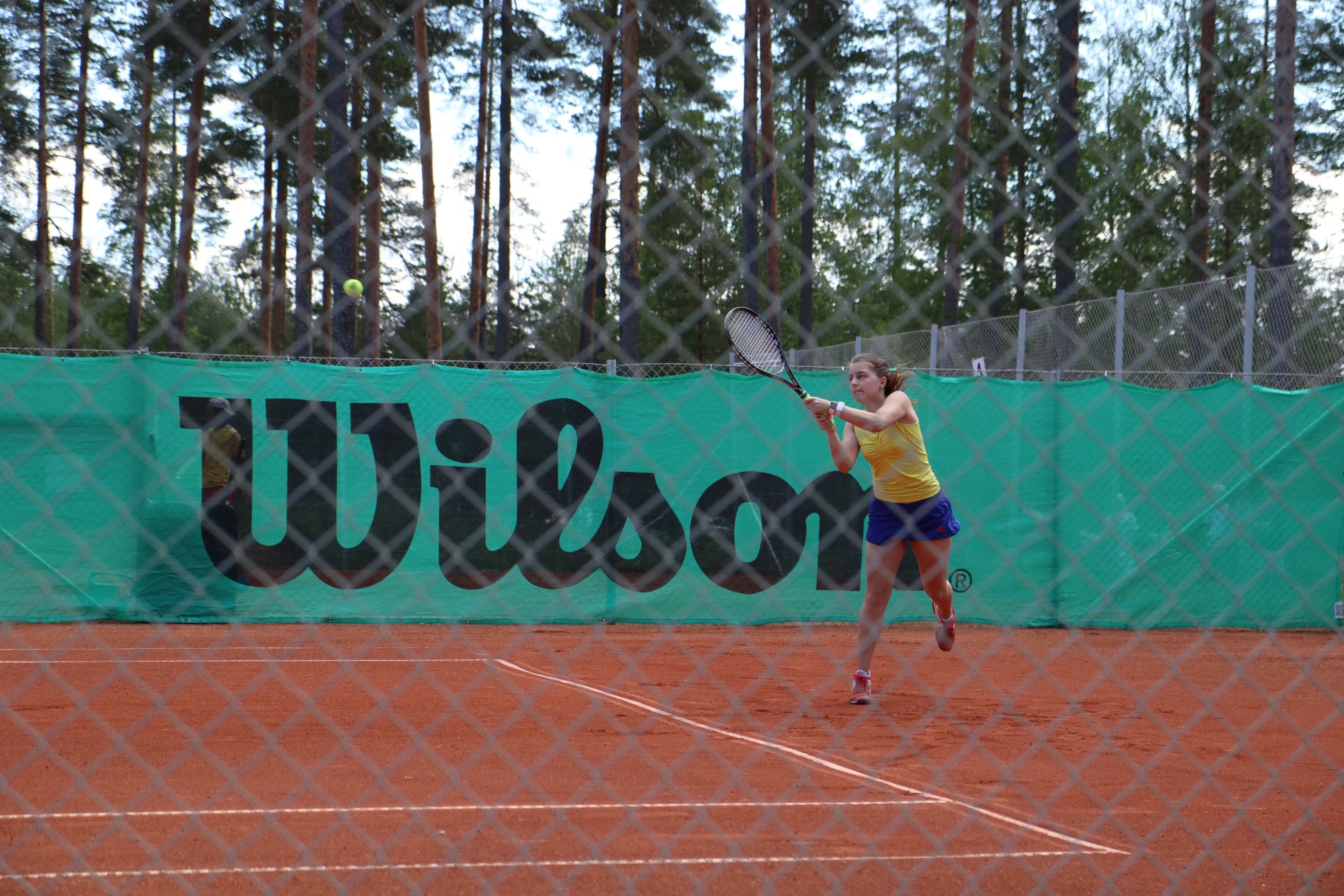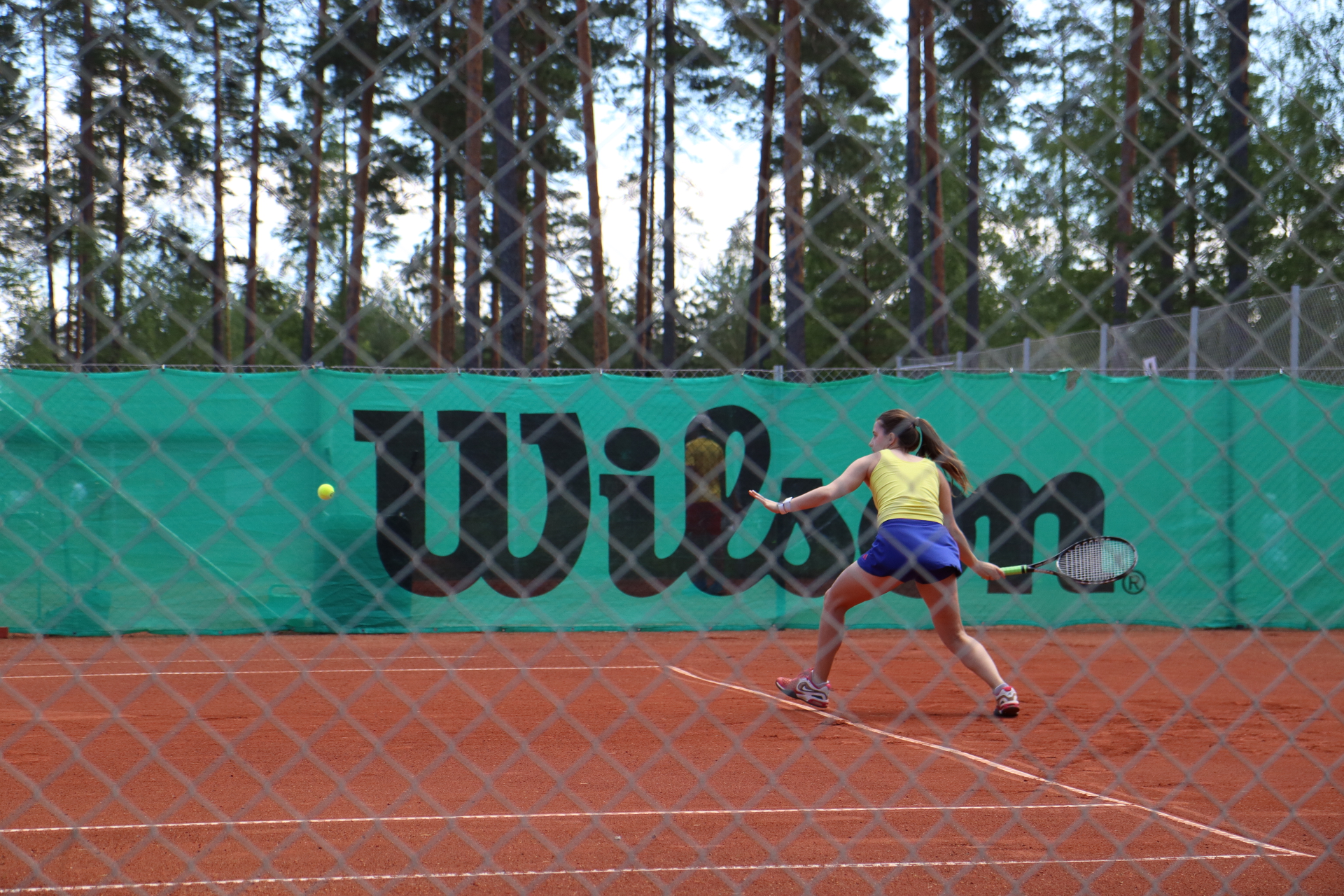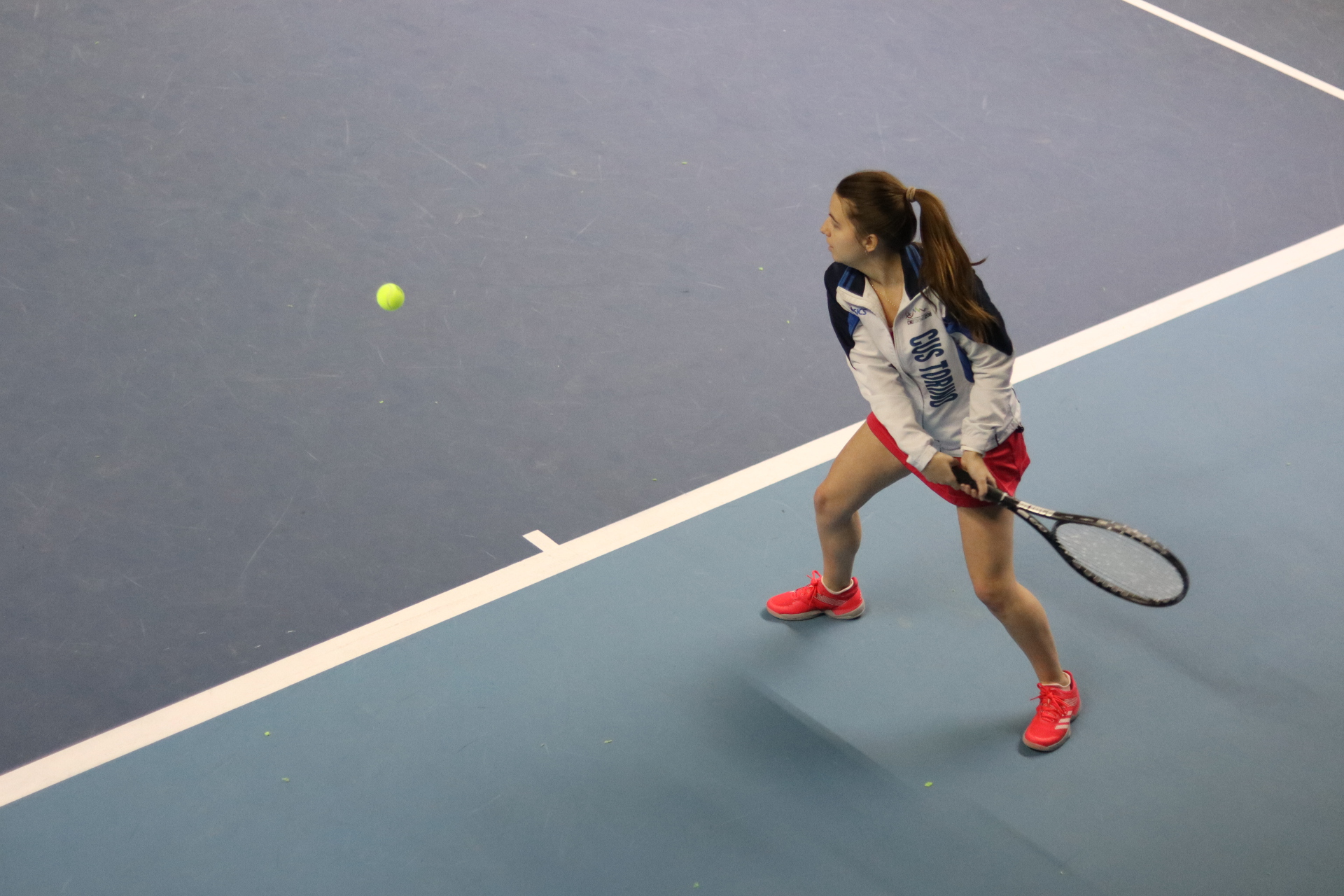Forced errors - How to make your opponent miss

Did you know you can do well even without winners❓ Oh yes, you bet!
So whether your winners are already great or still a work in progress ⏳, don't forget there's another way to take matches after matches home and is just as effective, if not more. I'm talking about forcing your opponent into errors 😈!
You know, I've never had a flashy game with winners right and left, but I've won quite many matches against flashy players nevertheless 😇. And you know why? Because when I'm in match mode, I don't care so much how I win the points or how my game might look from the outside, all I care about is winning 🏆!
And when all you care about is winning and you're well aware that your strength #1 is not your winners count 🤓, then the focus of your game becomes building the points in a way that your opponents will miss even before you get to hit a winner and take way too many risks!
I'm Elena Margaria 👋🏻 and just like you, I'm on a mission to become the best tennis player I can 🥇. Even without a fancy team, or too much talent. Just with a huge desire to make it. That's why Tennis Rematch exists: to share everything I learn along the way 🤓, so you can get better faster, and together we can prove that we can achieve anything we set our mind to 🔥.
You ready?! You better be, because in this blog we'll take a look at forced errors from different angles 📐 so you'll never have to worry again about your low winners count, as it won't prevent you from winning!
Here's what you'll find in this blog 👇🏻. As always, feel free to jump straight into a specific topic 🐸, but keep in mind you'll have the best experience by going in order 😊.
What is a forced error?
First of all, let's clarify one thing 🔦: forced errors have nothing to do with unforced errors ❌. In fact, despite their name, they resemble much more a winner than an unforced error.
Counterintuitive, right? I agree, but take a look at their definitions 👇🏻.
⭐️ A winner is a shot that is not reached by the opponent and wins the point. For example: an ace, a passing shot, or a backhand down the line that the opponent is not able to touch.
⭐️ An unforced error is an error that is not caused by the opponent, but simply the result of poor execution by the player. For example: an aggressive forehand on a high ball in the middle of the court that lands out, or an easy volley high over the net that lands in the alley.
⭐️ A forced error is an error caused by the opponent's good play. For example: a missed return on a well-placed slice, a forehand in the net on an insidious low back, or a smash that lands out on a deep high lob.
As you can see, winning a point with a winner is not that different from winning a point because of a forced error by your opponent 🤙🏻: in both cases, the credit of the point goes to you 😎 and your opponent has nothing to blame on herself, she can only clap you 👏.
In both cases, you've built the point smartly and did something special ✨ that either didn't give her any chance to get to the ball or let her get to the ball but made her so uncomfortable that she missed her shot. So either case, well done 🙌🏻.
On the other hand, when you win a point because your opponent misses for no reason (or the reason has nothing to do with you and your game), that's just luck 🍀. All the blame is on her, and no credit goes to you.
That's why it's not a good idea to rely on unforced errors to win your points: because they're not up to you! So what if your opponent doesn't miss? Or she never misses before you do? I'll tell you: you'll lose 👎🏻.
So trust me, don't even think of winning your match just with the unforced errors from your opponent, because it's not gonna work! Yes, if you can be extra consistent she'll eventually hand you some free points 🎁, but they won't be even nearly enough to win the whole match.
Instead of waiting for your opponent to miss, focus on making her miss: that's a far better tactic!
Why are forced errors so crucial in a tennis match?
Simply said, because they make the difference between winning 👍🏻 and losing 👎🏻 a match.
🤨 Wait, what? Yes, you heard it well: they do 😊.
Indeed, of all the possible match stats the forced error is the one that absolutely, positively matters the most in tennis. And no, that's not my opinion, it's a matter a fact 💯! And here's why 👇🏻.
If you think about it, every point ends with one of these 3 shots: a winner, a forced error or an unforced error. That's how it goes, there's no other choice 🤷🏼♀️!
But guess what? The majority of the points end with a forced error, not with a winner or an unforced error.
And not only at the club level, at the pro level too. Just take a look at these numbers 👇🏻from the men's draw at the 2015 Australian Open:
📊 30% of the points ended with a winner
📊 28% with an unforced error
📊 42% with a forced error
Hard to believe 😳, isn't it? In fact, as spectators we tend to remember winners much better than errors, as the former catch our eyes 🤩 while the latter look like nothing special (and new) to us!
But that doesn't mean our impressions correspond to reality. As you can see, they don't. AT ALL!
And if in a Grand Slam not even one third of the points end with a winner 💥, you can be sure that at a lower level the percentage is even lower.
But why, why are forced errors the main source of points❓
Because playing with the aim of forcing your opponents into errors has a lot of advantages over going straight for winners or waiting for your opponent's unforced errors. For example:
🎯 it makes you play aggressive, but without running too much risk;
🎯 it keeps you at the helm of the points, instead of at the mercy of your opponent;
🎯 it relieves some pressure from your shoulders, and shifts it on your opponent's.
In short, it makes you play smarter 🧠 and better 🔝.
But now the question is, how can you force your opponent into errors? What's that special thing you need to do in order to cause forced errors? Let's get into that.
How to make your opponent miss
To make your opponent miss, there's only one thing you need to do: you need to make her uncomfortable. That's all: no more, no less.
But what does that mean? How do you make her feel that way?
You have many options here, more or less effective depending on your strengths and her weaknesses 👇🏻.
🔐 CONSISTENCY → If you don't mind long points and know your opponent doesn't handle them well (either physically or mentally), you can go for extra consistency and give her no choice but try something more (and miss) or accept the fact she'll have to fight longer to win a point.
🔐 DIRECTION → If you feel comfortable changing direction at every ball, don't think twice and do it: you'll eventually break your opponent's legs and lungs, with the likely result she'll hurry to end the point too soon just not to have to run side-to-side for too long.
🔐 DEPTH → If you have good control on the depth of your shots and, why not, maybe drop shots even come relatively easy to you, then don't forget to use depth variety not only between different points, but within the same point as well. This tactic has the potential to literally break your opponent's game, as it prevents her from hitting twice in a row the same shot and hence gaining any confidence.
🔐 HEIGHT → If your opponent is particularly good at hitting when the ball is in a specific striking zone, but not as good when it's higher or lower, then the game is done! All you have to do is constantly changing the height of the ball and you'll send her out of rhythm in no time.
🔐 SPIN → Just like the height of the ball, spin variety can go a long way. In fact, everybody is more comfortable with a spin than the other (usually back is the least favorite), so if you can master both top and back spin you can mix things up by alternating them with flat balls and make your opponent's life a real hell.
🔐 POWER / SPEED → Hand in hand with spin and height variety goes speed variety. Again, alternating faster balls to slower balls can be a great way to drive your opponent crazy and demand her full focus all the time. You can imagine yourself how tough it is to constantly adapt!
🔐 COURT POSITION → If you're an all-court-player, meaning you're pretty good in every zone of the court (behind the baseline, inside the baseline and at the net), you can cause a lot of harm. Surprising your opponent from different zones is an excellent tactic to keep her guessing all the time and get some extra forced errors, even just because of the surprise factor!
🔐 TIME → If you don't mind taking the ball early, a great way to put pressure on your opponent is to do just that. Taking time away from your opponent is always a good idea as it forces her to hurry not only her strokes, but her decisions too. At the same time though, keep in mind that sooner or later she might get used to it, so don't forget to alternate these faster balls with balls in which you take your time just to kill any chance of adaptation. Messing up with your opponent's tempo can really guarantee you a long streak of forced errors, so why not?!
That's a lot of different strategies to make your opponent miss, isn't it❓ I'm sure you knew many of them already, but how many are you actually using during your matches❓
I'm asking because, although I'm aware of all the options I have, I always end up using the same ones 🤷🏼♀️: direction, height and time, my favorites of course! And guess what? That's not ideal!
Instead, practicing different kind of variations 🌪 and getting comfortable with all of them should be a must in your trainings (and mine too!). Owning a specific one can just be the key 🔑 you need to beat a certain type of opponent.
Because here's the thing: not only different strategies have different effects on the same opponent, but also the same strategy has different effects on different opponents. Which is why it's crucial to know what's the best option to use according to your opponent's type 👤!
Different strategies for different opponent types
Having too many options is not always a good thing, but when you know which one works best in which situation, then it can be a huge advantage 😎!
So here are a few guidelines that can help you choose which strategy to adopt according to the opponent type you're facing. I hope it helps and saves you from some painful trial and error 😉!
👤 The lazy or physically deficient 👉🏻 Extra consistency, continuous changes in direction and depth variations work best with this type of opponent, as they force her to do what she would rather avoid: long rallies and moving!
👤 The retriever 👉🏻 Depth, court position and time variations are great with consistent opponents, as they force them to either play from different zones of the court (which they don't like as much as the bottom of the court), take some initiative to avoid your winners at the net or have to suddenly hurry a stroke.
👤 The aggressive baseliner 👉🏻 Any variation is good: as long as you're not playing twice the same ball but keep her guessing, there's a good chance you'll get some forced errors in return. This kind of player doesn't like losing control of the point nor meters of the court, and is eager to risk a lot just to avoid it. So mix up your variations to control the point and the court, and she'll be extremely annoyed.
👤 The serve and volleyer 👉🏻 Continuous changes in direction and height, together with power and time variations can seriously put this player in difficulty when it's her turn to serve, as she'll never know what to expect once at the net. On the other hand, don't forget to use different court positions yourself and follow to the net when you have the chance to: in this way, you'll take away from her her favorite weapon.
👤 The all-court player 👉🏻 Just as for the aggressive baseliner, any variation is good and the more variations you can use the better! In fact, even though this player is comfortable in every zone of the court, it doesn't mean he enjoys or thrives when there are continuous variations. Here's a secret: nobody does!
As you can see, there's not only one way to force your opponent into errors, not even when you take into account her game style and fitness level. But one thing is clear: the more variations you own 🎨, the easier it is to force any opponent into errors!
Forced errors recap
Time for a little recap! You know, just to make sure you grasped the main concepts about forced errors. Hopefully it helps!
Here's what we've covered in this blog 👇🏻:
🎾 what is a forced error (👉🏻 an error caused by the opponent) and why it's more similar to a winner than an unforced error (👉🏻 because the credit belongs to the opponent, not the player herself), so you don't obsess too much on the winner count but on the sum of winners and forced errors instead;
🎾 the reason why forced errors are crucial in a tennis match ( 👉🏻 because the majority of the points end with a forced error), so you understand what really counts and what doesn't;
🎾 the benefits of focusing on forced errors (👉🏻 less risks, less pressure, more control), so you know what you get when you actually play with the aim of forcing your opponent into errors;
🎾 8 strategies to make your opponent miss (👉🏻 too many to be listed here), so you have an overview of the options you have and know what to practice;
🎾 which strategy to use with which opponent (👉🏻 the one that exploits the most her weaknesses), so you know what do according to the player you're facing.
That was a lot of info, wasn't it❓ Make it yours and you'll win a lot more!
If you liked this post, please leave me a clap (or two). It's a small act for you, but it would mean a lot for me 💕.
Then you're one of us! We're a community of passionate and motivated tennis players who work hard every day 💦 to reach their goals, motivate each other 🔥 to keep going when things get tough and share their own experiences 💬 so everybody can get better faster.

Hungry for more?
Enjoy these tennis bites, they’re just as good! 🤗👇


